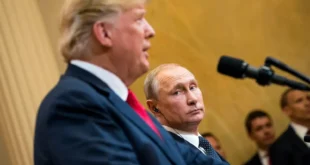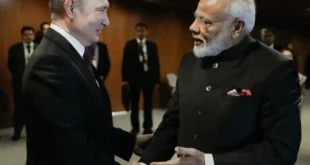Fatima Arshad
East Asia has been the most dynamic region where development has been internationally recognized. The regional politics of the region has developed a paradox that has flamed up the economic environment of the region. The trends have shown the increased intensifying security issues along with the strategic completion that has spread the security and economic tensions across the East Asian Region. In a global circle, China is known as the revisionist state. The historical manners suggest the reclaim of East Asia by the Chinese. This claim has intensified the relations between the US and China in East Asian Region. The main challenge for China is to shift the US intervention from the East Asian region for the balanced equation at the strategic level. This might provoke the US and its allies in East Asia such as Japan that will help the US to jeopardize the Chinese rule from the region. The challenge for the US and its allies in the East Asian Region is more complicated because of the economic stability of China at the International Level. This might be a proxy war for both the superpowers in the East Asian region where the conflict may rise compromising the strategic stability of the region. The strategic location of the US lies in the actual form of ability and project power over great sustainable intervals. The strategic behavior increases the policies and shapes the allies.
One prevalent belief in the United States about China’s long-term policy goals in Asia is that Beijing aspires to be the regional hegemon and wants to restore a Sino-centric order in the region.
First, Beijing favors unipolar ties at both the global and regional levels and believes that with ongoing economic growth, this trend will continue intra-regional political consultation in Asia, influence on regional affairs is going to be more diversified and more evenly distributed. Secondly, although China expects some relative increase in its influence in Asia, it understands that thanks to the boundaries of its hard power and particularly its soft power, China can never achieve a grip cherish its role within the ancient past or to the U.S. role within the region at the present.
Beijing’s perspective:
From Beijing’s perspective, the US is an East Asia power, although not an Asian power, and its political, economic, and security interests within the region are deep-rooted, as are its commitments to regional stability and prosperity. Beijing has always welcomed a constructive U.S. role in regional affairs. At the identical time, however, Beijing also feels uneasy with certain aspects of U.S. policy. As a superpower, The US has been too dominant and intrusive in managing regional affairs. It fails to pay due regard to the voices of other regional players and sometimes gets too involved within the internal affairs of other states, lacking an understanding of their culture, history, and values.
The US and European aspects towards the South China Sea and East Asia should involve long-term perspectives of engaging ASEAN states. Such impacts will create room for the US to tackle China in the East Asian region. The development of any comprehensive strategic security policy is the need of the hour that assures one’s interest in the region. Both the states perceive a threat from each other and try to further advance their capabilities for the sake of safety and security. The US is not in a position to deal with the other power far away from its homeland, sustaining its military and protecting allies. Aggressive behavior in strategic competition can lead to unwanted results. The US would have to accept the strategic realities of China to normalize the relations. China on the other hand should rethink its policies in East Asia and Indo Pacific. However, as yet, deterrence has played its part by keeping states from a large-scale action. States running in the race of acquiring arms conventionally due to uprising strategic competitions are worsening any likely condition of conflict.
Key points for US:
In terms of identifying specific actions for a U.S. strategy for competing strategically with China in East Asia, a key element would be to possess a transparent understanding of which actions are intended to support which U.S. goals, and to take care of an alignment of actions with policy goals. Cost-imposing actions are actions intended to impose political/reputational, institutional, economic, or other costs on China for conducting certain activities within the East Asian Region, with the aim of persuading China to prevent or reverse those activities. Such cost-imposing actions need not be limited to the East Asian Region only.
Conclusion:
The development of any comprehensive strategic security policy is the need of the hour that should involve joint military maritime exercises. The US and China have set their limits in coordinating military to military joint cooperation due to their desired interests and competition. Both the states perceive a threat from each other and try to further advance their capabilities for the sake of safety and security.
 Geostrategic Media Political Commentary, Analysis, Security, Defense
Geostrategic Media Political Commentary, Analysis, Security, Defense





